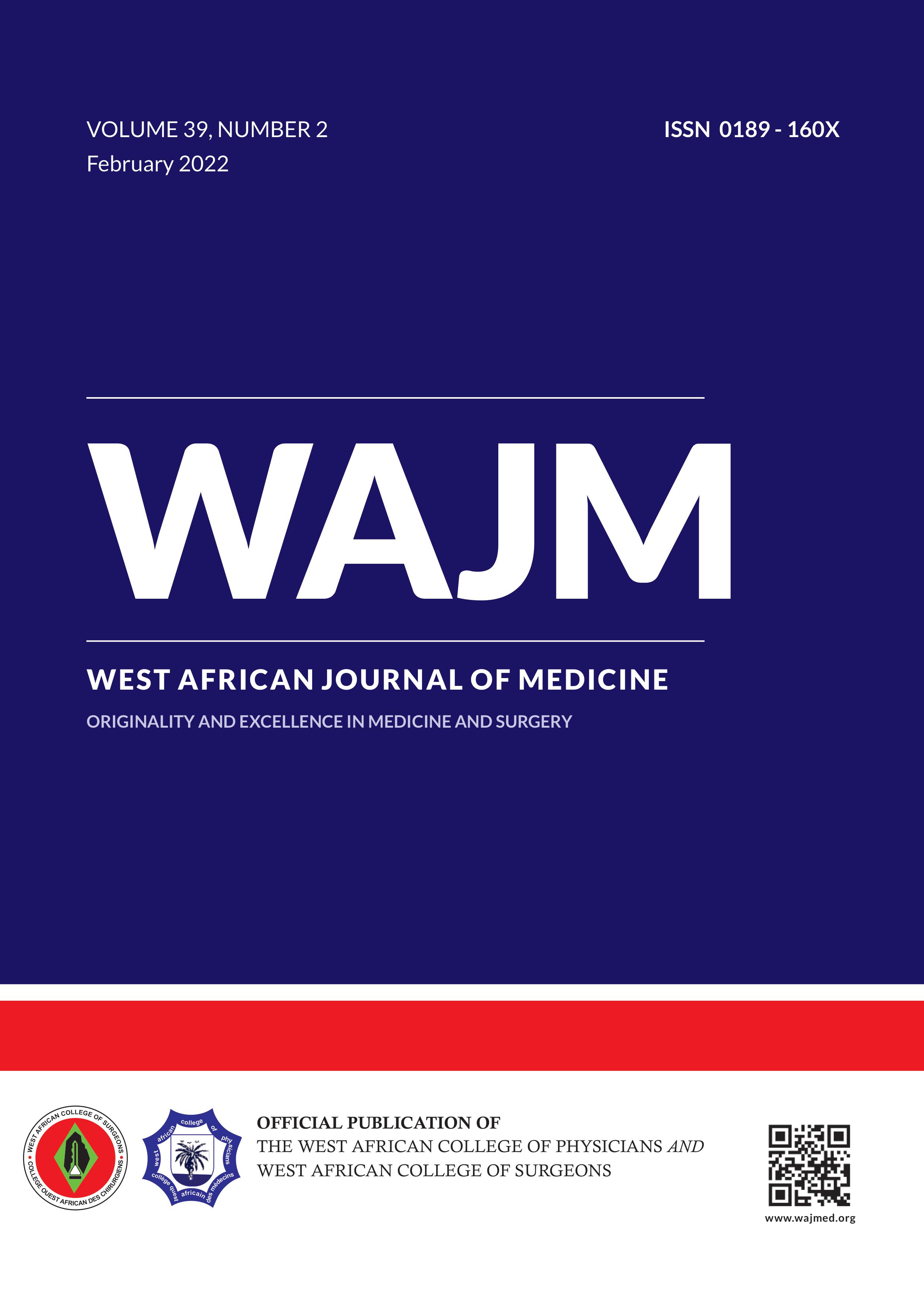ORIGINAL: Heavy Malaria Parasitaemia in Young Nigerian Infants: Prevalence, Determinants and Implication for the Health System
West Afr J Med . 2022 Feb 28;39(2):154-161.
Keywords:
Heavy parasite density; Malaria parasitaemia; Prevalence; Young infants.Abstract
Background: Infants who are aged six months and below are often protected from malaria and usually present with light parasitaemia when infected. However, complications following heavy malaria parasitaemia in this age group are being increasingly reported. This study set out to determine the prevalence, determinants and the public health implications of heavy malaria parasitaemia in young infants (aged one to six months) at the Wesley Guild Hospital, Ilesa (a unit of the Obafemi Awolowo University Teaching Hospitals Complex).
Methods: Ill infants aged one to six months in out-patient and in-patient care were recruited over an 11-month period. Clinical examinations and blood film for malaria parasite were done for all the study participants. Heavy parasitaemia was defined as > 5000 parasites/µl. Clinical predictors of heavy parasitaemia were determined.
Results: Heavy parasitaemia was observed in 16(23.9%) of the sixty-seven participants with malaria infection. Presence of fever at presentation (p=0.007), excessive crying (p=0.003) and pallor (p=0.001) were associated with heavy malaria parasitaemia. However, pallor (OR = 20.653; 95%CI 2.091-203.958; p=0.010) was the only independent predictor of heavy parasitaemia among the young infants.
Conclusion: About one-in-four ill young infants with malaria had heavy parasitaemia, which was predicted by pallor. Hence, the presence of pallor and factors related to low parental socio-economic status should increase the suspicion of heavy malaria parasitaemia in ill young infants in malaria endemic settings.
Keywords: Heavy parasite density; Malaria parasitaemia; Prevalence; Young infants.
O F Folarin 1, B P Kuti 1 2, A O Oyelami 1 2


